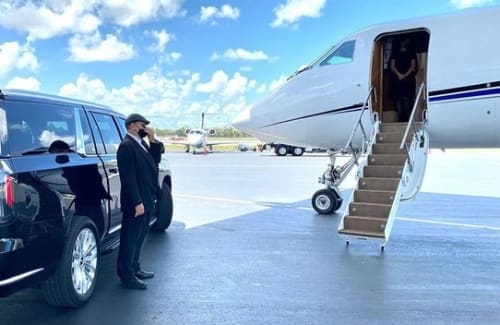Local Legend: Noelia Mendoza Ruiz
Noelia is a woman I have known all my life. As a child I played with her daughter who became my good friend in adulthood. I vividly remember walking down the street to her DVD rental store and picking out Mars Attack to watch with my dad. You can now find her at her store (which is also a laundromat) folding clothing in the back, or cooking a meal for her family. I interviewed her there while she spoke to customers, served rice for her nephew, and did laundry. Music was playing in the background as well as the steady hum of the washing machines. As she spoke my own memories came alive and I could taste and smell our Sayulita once again.
My name is Noelia Mendoza Flores. I was born in the state of Guerrero, which is a very beautiful state in the south. Our food there is very good, a typical dish there is mole with chicken and rice.
I came here with my parents when I was 18, in 1982. I was a teenager and I remember being so in awe with how beautiful it was here. My father decided to bring us here because he had a friend who lived in the area, and at first we lived in La Peñita. At that time La Peñita was also a very small town. We went on an errand one day to San Pancho and fell in love with how beautiful it was. We couldn’t believe that such a beautiful place existed. At that time the entire town worked in a factory that produced marmalade, canned chilies and jalapenos, and packaged milk. That’s how the townspeople in San Pancho made a living. In Sayulita they had a factory as well where they made wooden boxes, like the ones you see at a fruteria. That’s how people lived back then.
So my parents and I realized that there was a way to live in San Pancho. My family had always had their own businesses, so we arrived in San Pancho and settled there with that idea in mind. At that time, the San Pancho hospital was a well-known hospital, very clean and beautiful. It was famous in the area and people would line up from 5 am to get in, arriving all the way from Tomatlán. There were very good doctors and the place was very nice. People would come to our house to ask for water or a glass of milk because there was no food in the place, and that’s when my mother came up with her new business: selling food in front of the hospital.
We were the first people to have food for sale in front of the hospital. After that, more people joined in to sell, but we were the first. My mother also sold clothes to the girls who worked at the factory. She would let them pay the clothes in installments.
In Guerrero, my entire family was dedicated to having paleterías. Here in Sayulita, we set up the first paleteria, which was right in the plaza. After that I got married and my mom couldn’t have it, so my mom sold it to the famous Michoacana paleteria. When I got married, my husband and I went to the United States to work. There I had my first two daughters of the three that I have.
When I returned I saw that Sayulita had changed, but just a little. It was still a magical town. It looked so beautiful to me that I didn’t want to go back. I had asked for permission from work to come for three months, but Sayulita was so beautiful that I didn’t want to return. My daughters here had so much freedom, this was a small pueblo, we all knew each other. They were free in the street. My daughter Karolina would run over to her grandmother on the corner where there was an almond tree. The neighbors would yell “Here is Karo!” and I didn’t have to worry. I went to the beach with them, right here on the main beach. There was an area we called “Las Pilitas”. A natural pool was formed there where the girls could play. If I saw someone on the beach, I would ask them to take care of my daughters and leave them playing there. They were free. I thought, I don’t want to return to the United States.
I liked freedom here so much. You could smell the sea everywhere. If the lady on the corner was frying fish, you could smell it from the house. There were only smells of the pueblo. I don’t know how to explain it, maybe those smells are diluted by everything that is here now. But before this town smelled of the sea. The sand in front of us was white sand full of shells, snails. Now you only find cigarettes or garbage. The stream was so clean that you could drink that water. There the women of the town cleaned their clothes. The water was transparent, crystal clear, clean. With that rover water we cooked, cleaned the dishes, did everything. It is something so nice to remember and at the same time so sad. I wonder how we can have the town so dirty, let the river get dirty to such a degree, so many buildings and hotels without parking, no public bathrooms. There is no longer the neighbor who says “Good night!” when you pass the corner with the almond tree. They are pushing us out of town little by little. But I think Sayulita is going to revive. We are in a difficult time, but I see a beautiful future for Sayulita. I hope with these memories we remember why we love Sayulita: for its nature and irreplaceable beauty, its local people who keep the essence of Sayulita alive. We have to take care of it as much as we can.
You can find Noelia and go to her laundromat on Avenida del Palmar. Look on the map for the place that says: laundry in 3 hours.
Spanish:
Mi nombre es Noelia Mendoza Flores. Yo nací en el estado de Guerrero, que es un estado muy bonito al sur. Ahí nuestra comida es muy rica, nuestro plato típico es el mole con pollo y arroz.
Llegué aquí con mis papás a los 18 años, en el año 1982. Yo era un adolecente y me quedé impresionada con lo hermoso que era aquí. Mi papá decidió traernos aquí porque él tenía un amigo que vivía por esta zona, y al principio vivíamos en La Peñita. En ese entonces La Peñita era un pueblito muy pequeño también. Fuimos a un mandado un día a San Pancho y nos enamoramos de lo hermoso que era. No nos podíamos creer que existiera un lugar tan bonito. En ese entonces todo el pueblo trabajaba en la fábrica, que era de producción de mermelada. De eso vivía la gente del pueblo. También en esa fábrica enlataban chiles, jalapeños, y también empaquetaban leche. En Sayulita tenían una fábrica de cajas de madera, como las que ves en las fruterías. De eso vivía la gente en ese entonces. Así mis papás y yo nos dimos cuenta que había forma de vivir en San Pancho. Mi familia siempre vivió de tener negocios propios, entonces llegamos a San Pancho y nos instalamos ahí.
En ese entonces el hospital de San Pancho era un hospital muy conocido, muy limpio y bonito. Era famoso en la zona y la gente se ponía en fila desde las 5 am para ser atendida ahí, llegando desde Tomatlán. Había muy buenos doctores y era muy bonito el lugar. La gente llegaba a nuestra casa a pedir agua o un vaso de leche porque no había comida en el lugar, y ahí a mi mama se le ocurrió su nuevo negocio: vender comida enfrente del hospital. Fuimos las primeras personas en tener comida a la venta enfrente del hospital. Después de eso se unieron más personas a vender, pero fuimos las primeras. También en la fábrica, como trabajaba todo el pueblo, hasta gente de Lo de Marcos, mi mama le vendía ropa a las chicas que trabajan ahí. Les daba la ropa en abonos. En Guerrero, toda mi familia se dedicaba a tener paleterías. Aquí en Sayulita, nosotros pusimos la primera paleteria, que estaba en la plaza. Ya después de eso me casé y mi mama no pudo tenerla, así que mi mama se la vendió a la paleteria Michoacana. Cuando me case, yo y mi marido nos fuimos a los Estados Unidos a trabajar. Ahí tuve a mis dos primeras hijas de las tres que tengo.
Cuando volví vi que Sayulita había cambiado, pero poquito. Seguía siendo un pueblo mágico. Se me hacía tan bonito, que no quise regresar. Había pedido permiso en el trabajo para venir tres meses, pero Sayulita era tan hermoso que no quise regresar. Mis hijas aquí tenían tanta libertad, esto era un pueblo, todos nos conocíamos. Ellas iban libres por la calle. Mi hija Karolina se iba con su abuelita a la esquina donde había un almendro. Las vecinas me gritaban “Aquí está Karo!” y no me tenía que preocupar. Me iba a la playa con ellas aquí enfrente, antes le decían “Las Pilitas”. Se hacía una pileta donde las niñas podían jugar. Si yo veía a alguien en la playa, les encargaba a mis hijas y ahí les podía dejar jugando. Eran libres. Yo pensé, no quiero regresar a los Estados Unidos.
Me gustaba tanto la libertad. Podías oler el mar en todos lados. Si la señora de la esquina estaba dorando pescado, lo olias desde la casa. Solo había olores del pueblo. No se como explicarlo, tal vez esos olores se diluyeron por todo lo que ahora hay aquí. Pero antes este pueblo olía al mar. La arena de aquí enfrente era una arena blanca llena de conchas, caracoles. Ahora solo encuentras cigarros o basura. El arroyo estaba tan limpio que podías tomar ese agua. Ahí limpiaban su ropa las mujeres del pueblo. El agua era transparente, tan limpia, Con ese agua cocinabamos, limpiabamos los platos, todo.
Es algo tan bonito de recordar y a la vez tan triste. Me pregunto cómo podemos tener el pueblo tan sucio, dejar el río ensuciarse a tal grado, tanto edificio y hotel sin estacionamiento, ningún baño público. Ya no hay el vecino que te diga “Buenas noches!” cuando pasas por la esquina. Nos están sacando del pueblo poco a poco. Pero yo pienso que Sayulita va a revivir. Estamos en un momento difícil, pero veo un futuro bonito para Sayulita. Espero con estos recuerdos recordar porque amamos Sayulita: por su naturaleza y belleza irremplazable, su gente local que mantiene la esencia de Sayulita viva. Hay que cuidarlo lo más que podamos.






